Highlands Hammock is a popular place to camp. Many people come to see the ancient trees of the hammock. Eager to escape the frigid north, snowbirds migrate south in their RV’s. They camp in one state park for a week or two then move on to another. Highlands Hammock campground contains one hundred thirty-eight campsites. We were there midweek and every site was occupied. The developers of Highlands Hammock capitalized on the high demand for campsites by crowding as many sites as they could into the area. As you can see in the photo above there’s not much privacy between sites.
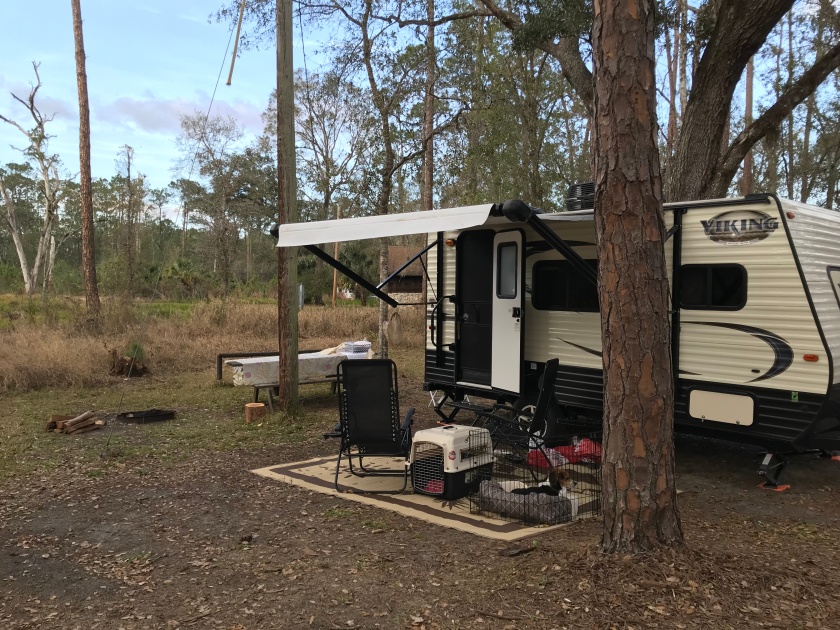
Our own site was difficult to navigate. My husband skillfully parked our trailer between two trees and in front of an electric pole. (We’ve owned our Viking for one year now, and he’s getting better.) At least we didn’t have anyone camped behind us, but our neighbors on either side were fairly close. We got to know our neighbors. Buddy, our beagle, always draws everyone’s attention. 
The close proximity of our campsites promoted more interaction among the campers. One morning a group of volunteers served a delicious and reasonably priced breakfast for everyone at the recreation hall. We enjoyed meeting other campers, talking about our adventures, and trading tips on the best campgrounds we’ve visited. There was a great feeling of community here. Proceeds from the breakfast help support the park.
I highly recommend the Tram Tour. Ranger Kevin took us for a tour through the more remote wilderness areas of the park. 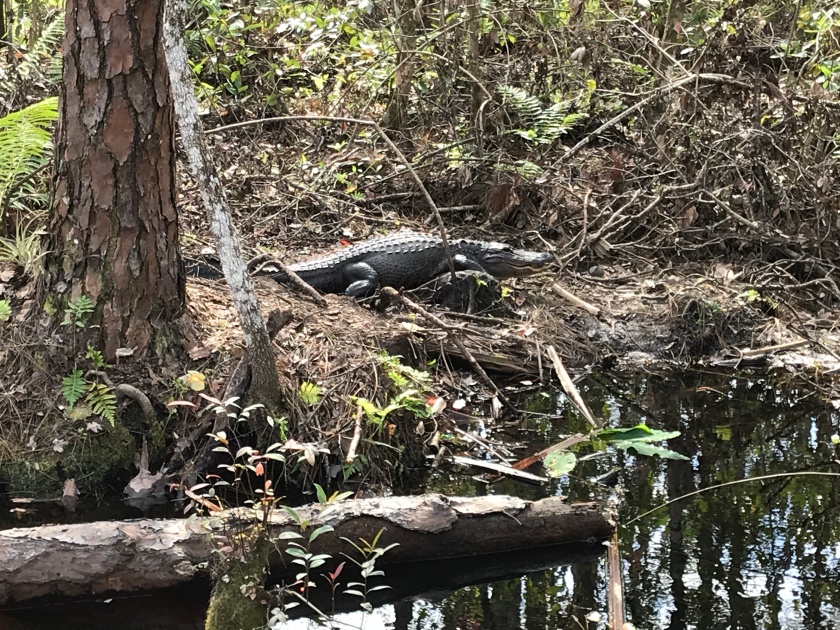 Kevin drove us through three different ecological communities. The palm hammock, pine flatwoods, and cypress swamp. Along the way he stopped to describe the plants and animals. He told us that alligators often lose body parts due to fights with other gators. Yet, they never die from infection. Alligator blood contains antibiotics and may be helpful as a remedy for MRSA. Scientists certainly have enough specimens to study in these parts.
Kevin drove us through three different ecological communities. The palm hammock, pine flatwoods, and cypress swamp. Along the way he stopped to describe the plants and animals. He told us that alligators often lose body parts due to fights with other gators. Yet, they never die from infection. Alligator blood contains antibiotics and may be helpful as a remedy for MRSA. Scientists certainly have enough specimens to study in these parts.
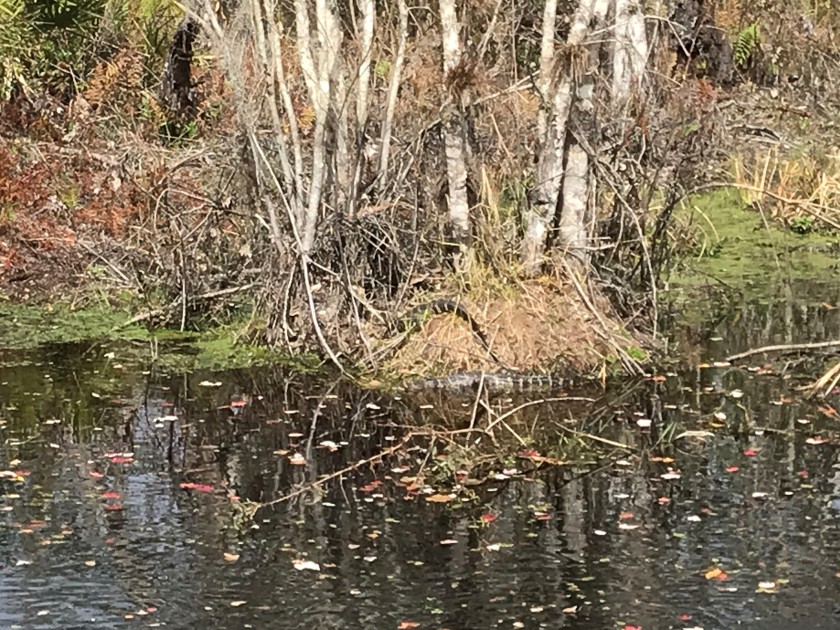
The cypress swamp teemed with life. Scores of alligators, snakes, birds, and turtles abounded in this beautiful place. Herb zoomed in on this delightful turtle.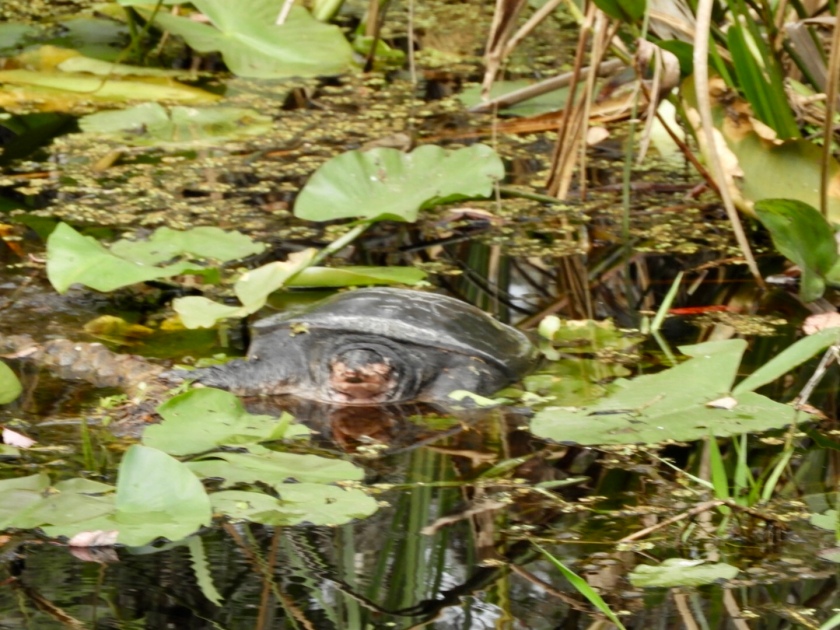
Ranger Kevin plucked his favorite flower from the swamp. The floating bladderwort is not only pretty, but helpful. This plant is carnivorous. Its underwater leaves bear small “bladders” which trap and digest mosquito larva. 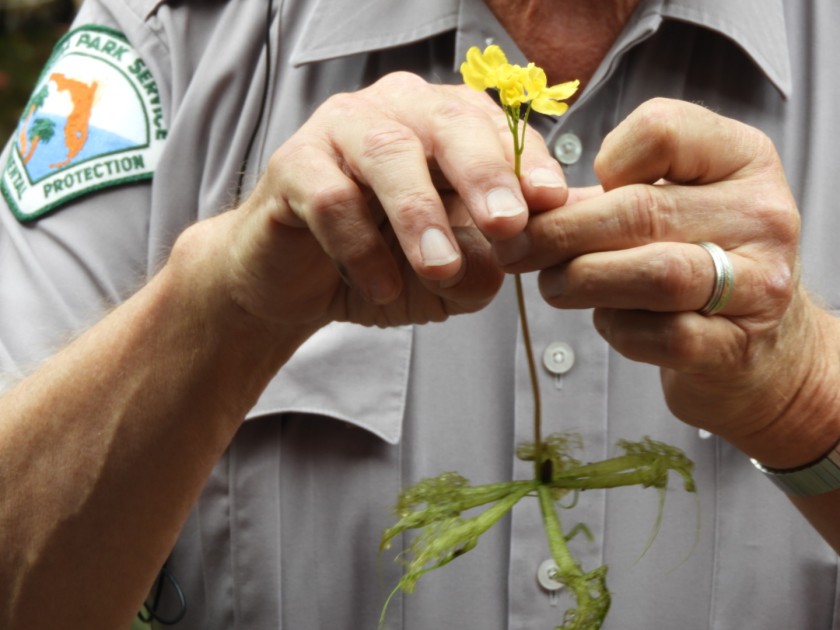 And like all good conservationists, Kevin placed the flower back in the water after his demonstration so it can continue its work.
And like all good conservationists, Kevin placed the flower back in the water after his demonstration so it can continue its work.
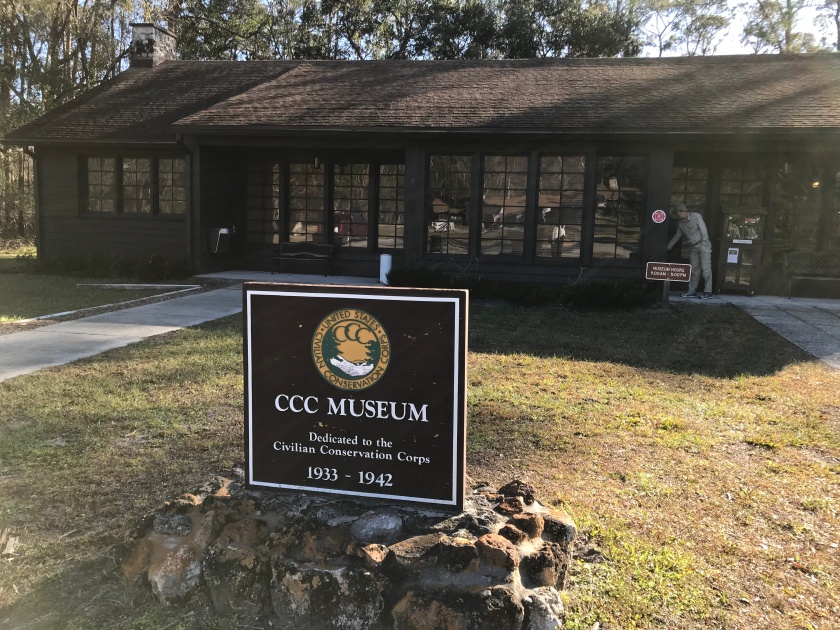 Highlands Hammock State Park is proud of its history. The park is one of eight in Florida developed by the Civilian Conservation Corps as part of Roosevelt’s New Deal of the 1930’s. The CCC constructed the visitor center. concession building, roads, and bridges. A museum displays memorabilia, photographs, and examples of CCC workmanship.
Highlands Hammock State Park is proud of its history. The park is one of eight in Florida developed by the Civilian Conservation Corps as part of Roosevelt’s New Deal of the 1930’s. The CCC constructed the visitor center. concession building, roads, and bridges. A museum displays memorabilia, photographs, and examples of CCC workmanship.
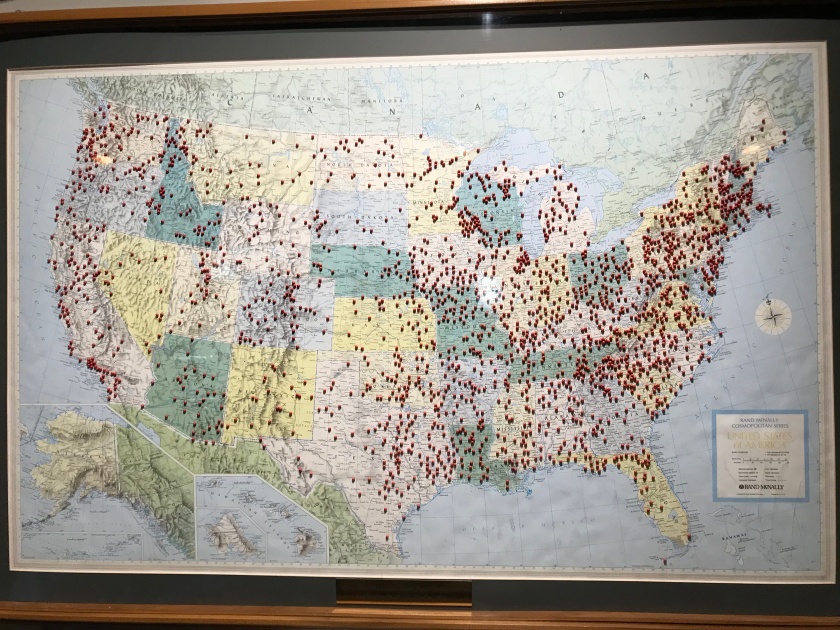
During the past year we visited two other parks built by the CCC, Florida Caverns and Hillsboro River. In the museum we viewed a map of all the public works initiated by this organization. We were amazed to learn they established 800 state parks throughout the country. The CCC built 13,100 miles of trails, and planted billions of trees. These men worked hard and were happy to earn a dollar a day.
And where was Buddy during all of our educational touring? Inside the trailer, of course. He learned something too. How much he misses us when we are away. Luckily beagles are quick to forgive. 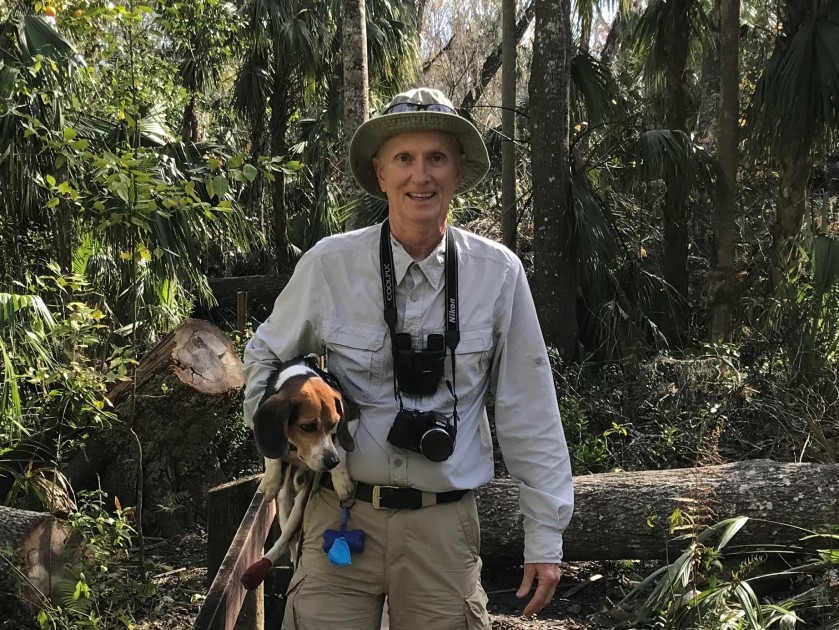







 My favorite tree is the Sabal palm. In Highlands Hammock many of these trees grow between seventy and one hundred feet tall. Upon my arrival home, I researched information about the life span of palm trees. I discovered palms do not have rings, so their age is determined by their height, rate of leaf production, and visible scars from fallen leaves.
My favorite tree is the Sabal palm. In Highlands Hammock many of these trees grow between seventy and one hundred feet tall. Upon my arrival home, I researched information about the life span of palm trees. I discovered palms do not have rings, so their age is determined by their height, rate of leaf production, and visible scars from fallen leaves.